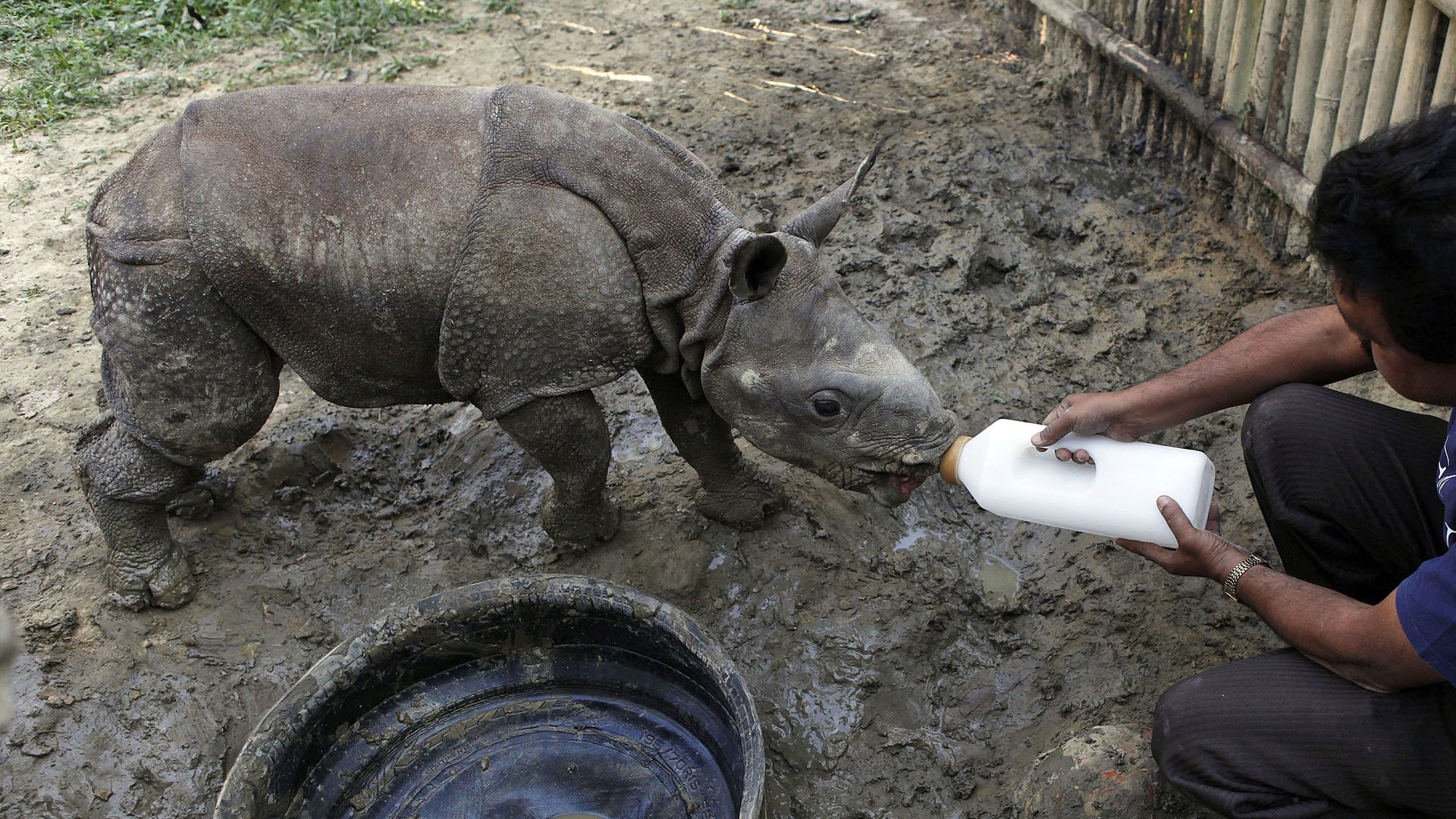Not just for the Taliban anymore: drones are now tracking rhino poachers
Deep in the heart of Assam, a remote northeastern province of India, a group of 150 guards watch for poachers in Kaziranga National Park, home to three-quarters of the world’s one-horned rhinoceroses.


Deep in the heart of Assam, a remote northeastern province of India, a group of 150 guards watch for poachers in Kaziranga National Park, home to three-quarters of the world’s one-horned rhinoceroses.
But with an area of 330 square miles (855 sq km) to cover, the guards can’t be everywhere. Last year poachers killed 22 rhinos. And another 13 have already been killed this year.
The Indian federal government is granting $7 million in additional aid to help protect the rhinos, reports the Wall Street Journal (paywall). The state government has sent in another 500 special guards.
And it will soon deploy drones.
Drones are not a common sight in India’s skies. But as rhino sanctuaries go, Kaziranga is not unique—reserve administrators around the world are increasingly turning to unmanned aerial vehicles to help guard their beleaguered rhinos. In January, a reserve in Kenya used crowdsourcing site Indiegogo to raise half of the $70,000 it needed to buy a drone. The World Wildlife Fund, a conservation group, is also planning to deploy a drone somewhere in either Africa or Asia this year, followed by another one next year, backed by money from a Google grant.
Unlike the sort of drones that fill the popular imagination, the aircraft used for conservation purposes don’t have to be very large or sophisticated to be effective. After all, its aim is not to kill people but to keep track of the rhinos and perhaps scare away potential poachers once they know they’re being watched. The Kenya drone weighs 3.5 pounds (1.6 kg) and includes an HD camera and night-vision. The drone used by conservationists in Nepal, for instance, is little more than a model airplane. Launched by hand, it flies a pre-programmed route and cost $2,500.
At the other end of the drone spectrum is the Arcturus T-20, which is used by the US Navy. Clive Vivier, a South African rhino reserve founder, wants to buy 30 of those—even though they’re $300,000. But South Africa’s problem is also much bigger. More than 650 rhinos were killed there last year alone.